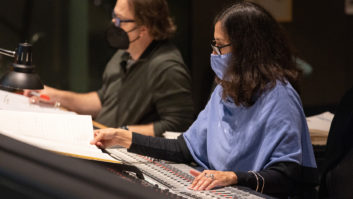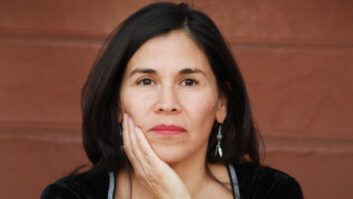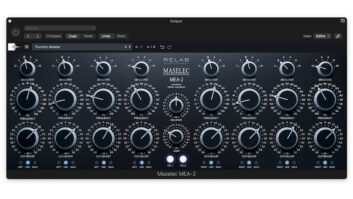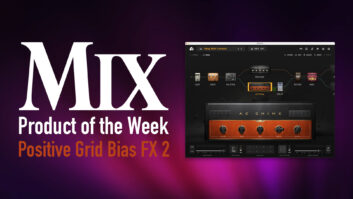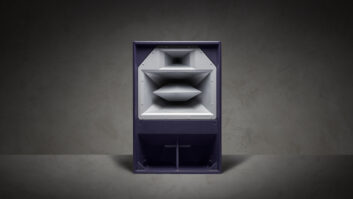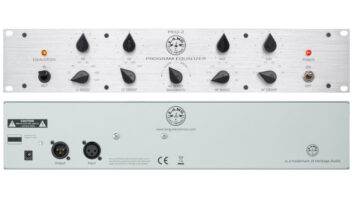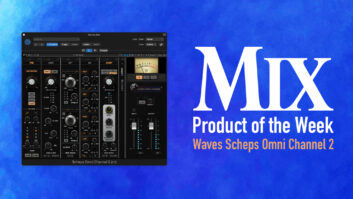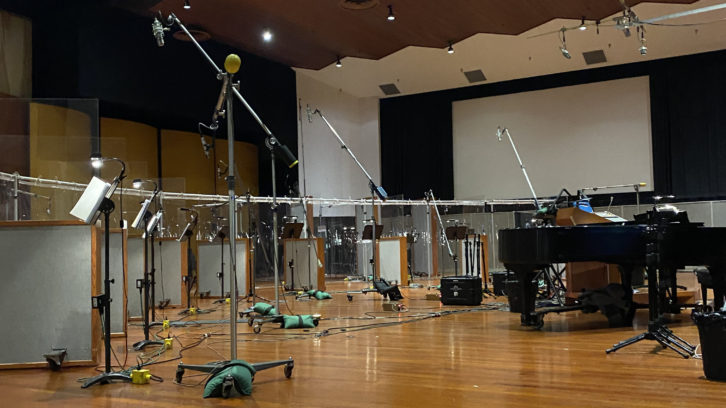
Creating and recording the music for the massive Disney hit Encanto was no simple project for composer Germaine Franco, as the conclusion of our look at the project illustrates. Don’t miss out on Part 1!
MAGICAL REALISM IN MUSIC
Directors Bush and Howard sought the “sound of magical realism” from the outset, Franco recalls, so her initial challenge was to define that subjective term as it relates to music, then bring her approach into their collaborative process. “Jared and Byron wanted the score to be intimate and authentic to Colombia,” she explains. “They wanted it to sound ‘different’ and reflect each of the character’s unique experiences. They did not want a big Hollywood orchestral score to play the entire time. I used the full orchestra where needed.”
Discovering what magical realism was required a lot of experimentation. Initially, Franco created several score suites. She explored sonic textures using Colombian instruments and traditional Western orchestral elements, as well as a rhythm section. She says, “I had to have a lot of patience and space to just explore. As a composer, sometimes you need to give yourself that space to find the gems and find the right tone of a film.”
Eventually, “magical realism” manifested itself as a hybrid of live playing and synthesized samples. Processing the tremolo harp and guitar parts using Valhalla’s Shimmer plug-in, for example, added a spacious and ambient quality the score needed. “Of course, if it was a specific melodic part, I would have Katie [Kirkpatrick] play it because it had a specific rhythm,” Franco shares. “Jared and Byron responded well to the ambient sound, as they felt that it gave an ethereal quality to the score. This worked well inside the ‘Bruno’s Tower’ sequence.”
Encanto’s songs—written by the Emmy, Grammy and Tony Award-winning Lin-Manuel Miranda—blend imperceptibly with Franco’s score. At times, it’s hard to tell what is score and what’s a song! This was no accident. Miranda started writing Encanto’s songs several years before Franco joined the film, so the composer was able to dissect their structure and instrumentation, then write complementary cues.
“The score had to fit seamlessly—like a tapestry—harmonically and rhythmically. I had to study his songs as an orchestrator and arranger because I was going to add a layer of orchestra to them after he and Mike Elizondo produced them,” she explains. “They were great songs. I needed to make my musical language similar to Lin-Manuel’s.
“Working with Lin-Manuel was amazing,” she continues. “Learning how he works and figuring out how to work within his world. He’s a genius musician. His storytelling technique is superb. I was conscious of that when I was writing the score. I wanted the score to feel like it lived in the same world as the songs.”
Franco’s score leads into and out of Miranda’s songs, and in the case of “Dos Oruguitas,” it bridges a gap between the song and a reprise. Yet, as a listener, you probably won’t catch it. “It’s very seamless. That was the intention,” Franco says.
FRANCO’S FLAIR
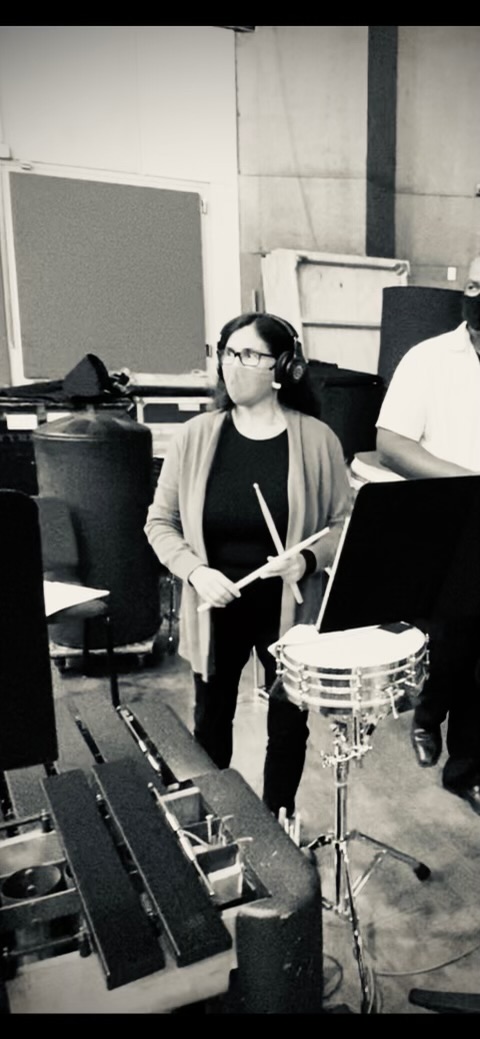
Franco’s musical path was paved with percussion and piano. She started on a snare drum in elementary school music class, and played percussion and piano through high school into college. She earned a Bachelor’s and Master’s Degree in Music from Rice University’s Shepherd School of Music, a music conservatory on the Houston campus.
Franco’s melodic and harmonic ideas start on piano and her Mac Pro workstation in Logic Pro, but there’s an intuitive sense of rhythm that guides her approach. For example, her nostalgic-feeling main theme in Encanto evokes the magic of the house, the magical setting in Colombia, and the family’s love for one another. It’s an overarching theme that begins with a conversation between Mirabel and her abuela but plays throughout the film.
“You’ll hear it transform in different ways, with different harmonies and different rhythms,” she says. “As a percussionist, I put that theme into a cumbia, but then you’ll hear it in the Afro-Colombian rhythm of the bullerengue. At the end of the film, when Mirabel receives her magical room, you will hear the Encanto theme in the full majestic and orchestral Disney tradition. By then, the theme has transformed and Mirabel discovers her true gift.
“Being a percussionist helps me to morph things, but I don’t just start with the rhythm when I’m writing my themes,” she explains. “I’m either singing or playing the piano and working out ideas. Then I like to have fun with them and change them up. I keep going back to the theme to find new ways to present it. It’s my musical beacon.”
END CREDITS
Franco’s score for Encanto—the first animated Disney film scored by a woman—is earning well-deserved recognition: an Oscar nomination for Best Original Score, a Society of Composers and Lyricists Award for Outstanding Original Score for A Studio Film, a Latino Entertainment Journalists Association Award for Best Musical Score, an Annie Award nomination, a Golden Globe Award nomination, and more.
It also hit the Top 10 in the Billboard Hot 200 chart and stayed there six weeks.
“Encanto is such a beautiful film and a great story,” says Franco. “I really wanted to do my best work on this project. Disney gave me so many amazing tools and opportunities to record and to expand my world as a composer and music producer.
“It was exciting to work on a score where I was able to infuse Latin music elements, to work with directors Byron Howard and Jared Bush, with songwriter Lin-Manuel Miranda, song producer Mike Elizondo, producers Yvett Merino and Clark Spencer, music executives Tom MacDougall, Matt Walker, Andrew Page, and Lauren Harold. I would like to give a shout out to all the musicians, singers, orchestrators, and the sound engineering crew, Greg Hayes, Alvin Wee, Will Chen, David Boucher, David E. Fluhr. A large group of people worked on this score as a team. Collaboration is so important in music, especially for music in film. I truly love this story and am so thankful that it has been so well received by the world.”
SIDEBAR: Magical Moment
One of Franco’s favorite cues, “Antonio’s Room,” plays during the scene in which Antonio receives his magical gift—the ability to converse with animals. Franco scores the moment with Afro-Colombian inspired rhythms and instrumentation from an area called San Basilio de Palenque, the first free town in the Americas founded by escaped slaves.
“Afro-Colombian music is still alive and well,” Franco says. “They have a genre of music and dance called bullerengue, which is traditionally performed by ensembles of women, called Cantadoras. The women play all the percussion—the marimba de chonta, guasá, tamboras, and cununos—while they chant and sing. I wanted to honor and pay homage to that beautiful tradition in Colombia.”
Franco asked Carlos Vives’ singer, Isa Mosquera, to perform a solo during the session: “She’s chanting and wailing and singing on top of this cue when Antonio is riding the jaguar. That was a really special moment.”
